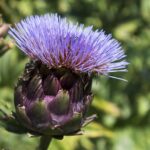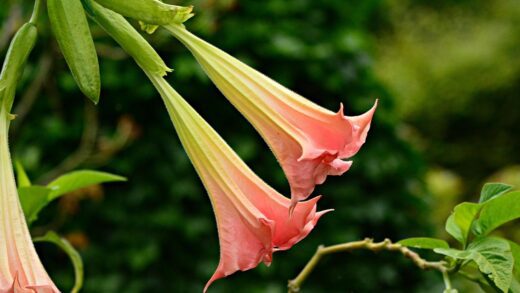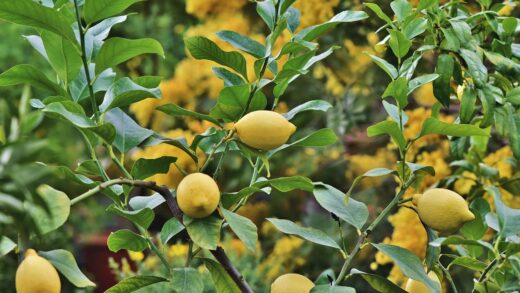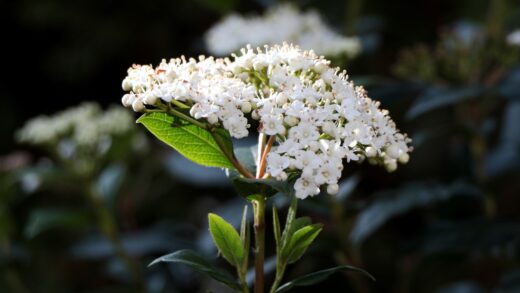Successfully guiding a lemon tree through the winter is a critical aspect of its year-round care, particularly in climates where temperatures drop below freezing. As subtropical plants, lemon trees are not equipped to handle frost, and exposure to freezing conditions can cause severe damage to their leaves, branches, and even the trunk, potentially leading to the death of the plant. The primary goal of wintering is to provide a protected environment that shields the tree from the cold while still meeting its basic requirements for light and water. This process requires careful planning and a gradual transition to avoid shocking the plant’s system.
The decision on when to begin the wintering process is dictated by the local climate. The tree must be moved to its winter location before the first hard frost of the season. This typically means monitoring the weather forecast closely as autumn progresses and temperatures begin to fall. Waiting too long can expose the tree to a sudden cold snap that could cause irreversible damage. Preparing for this transition in advance ensures that you have a suitable indoor space ready and that the move can be made smoothly and without stress for both the grower and the tree.
Before moving the tree indoors, it is an essential preparatory step to inspect it thoroughly for any pests. The warm, dry environment of a heated home can be an ideal breeding ground for pests like spider mites, aphids, and scale insects, and a small, unnoticed population can quickly explode into a major infestation indoors. Carefully check all parts of the plant, especially the undersides of leaves and the joints of stems. It is wise to treat the tree with horticultural oil or insecticidal soap as a preventative measure before bringing it inside, even if no pests are visible.
The transition from the outdoor environment to the indoor one should be as gradual as possible to allow the tree to acclimate. A sudden change from high outdoor light levels to lower indoor light can cause the tree to drop a significant number of its leaves in response to the shock. If possible, begin by moving the tree to a partially shaded outdoor location for a week or two before bringing it fully inside. This helps the tree adjust to lower light levels and reduces the stress of the move, leading to better leaf retention and overall health during the winter months.
Preparing the tree for indoors
The preparation for wintering a lemon tree should begin several weeks before it is scheduled to be moved indoors. A key step is to gradually reduce the frequency of fertilization as the end of summer and beginning of autumn approach. Ceasing the application of nitrogen-rich fertilizers helps to discourage the growth of new, tender foliage. This new growth is particularly vulnerable to both the stress of the move and the less-than-ideal indoor conditions, and it is also more susceptible to pests. The goal is to encourage the tree to slow its growth and begin hardening off in preparation for the dormant period.
More articles on this topic
A thorough cleaning of the tree is a highly recommended practice before it comes inside. Use a gentle spray from a hose to wash the leaves and stems, which will help to dislodge any potential pests, dust, and outdoor debris. This is also a good opportunity to perform a detailed inspection of the entire plant. Look closely for any signs of disease or pest activity. Addressing any issues while the tree is still outdoors is far easier and more effective than trying to combat a problem once it has established itself in your home.
This is also an ideal time to perform any necessary light pruning. Trim away any dead, damaged, or diseased branches, as these can be entry points for pathogens and can harbor pests. You can also lightly shape the tree to make it more manageable for its indoor space. However, avoid heavy pruning at this time, as this can stimulate new growth, which is undesirable right before the winter dormancy period. The primary goal of this pruning is sanitation and to improve the overall structure and health of the tree before it faces the challenges of the indoor environment.
Finally, check the condition of the pot and the soil. Ensure that the drainage holes are clear and not blocked, as proper drainage is especially critical indoors where the soil will dry out more slowly. Scrape away the top layer of soil and replace it with a fresh layer to remove any weed seeds or insect eggs that may be present. This pre-move checklist of cleaning, inspecting, pruning, and checking the container sets the stage for a much smoother and more successful wintering experience for the lemon tree.
Creating the ideal indoor environment
The most critical factor for a lemon tree’s indoor winter survival is providing it with as much light as possible. A south-facing window that receives direct sunlight for several hours a day is the absolute best location. If such a location is not available, an east- or west-facing window can be an alternative, though the light will be less intense. Insufficient light is the primary cause of leaf drop and a general decline in health for lemon trees overwintered indoors. The tree needs this light energy, even during dormancy, to maintain its basic metabolic functions.
More articles on this topic
In many homes, especially in northern latitudes, natural window light during the winter is simply not strong or long-lasting enough to keep a lemon tree happy. In these situations, supplementing with artificial lighting is not just a luxury but a necessity. A full-spectrum grow light, either fluorescent or LED, should be positioned above the tree and run for at least eight to twelve hours per day. This supplemental light can make a dramatic difference in the tree’s ability to retain its leaves and remain healthy throughout the winter.
Temperature and humidity are also important considerations for the indoor environment. Lemon trees prefer a cool period during the winter to undergo a proper dormancy, so a room that stays between 10 and 18 degrees Celsius is ideal. Avoid placing the tree near heat sources like radiators or vents, as the hot, dry air can desiccate the leaves and create a welcoming environment for pests like spider mites. The air inside most heated homes is very dry, so increasing the humidity around the tree by using a humidifier or placing the pot on a tray of water and pebbles can be very beneficial.
Proper air circulation is another key element that is often overlooked. Stagnant air can increase the risk of fungal diseases and pest infestations. Using a small, oscillating fan in the room for a few hours each day can help to circulate the air around the tree. This mimics the natural breezes the tree would experience outdoors and helps to strengthen its stems while creating a less hospitable environment for airborne pests and pathogens. Combining adequate light, cool temperatures, and good air movement creates the best possible indoor sanctuary for a wintering lemon tree.
Watering and care during dormancy
Watering is the aspect of care that requires the most significant adjustment when a lemon tree is brought indoors for the winter. The combination of lower light levels, cooler temperatures, and reduced growth means the tree’s water requirements will decrease dramatically. The most common mistake during this period is overwatering, which can quickly lead to root rot. It is absolutely essential to allow the soil to dry out more thoroughly between waterings than you would during the summer months.
The reliable finger test remains the best method for determining when to water. Before even thinking about watering, insert your finger deep into the soil, at least three to four inches down. If you feel any moisture at that depth, do not water the tree and wait another few days before checking again. Depending on the conditions in your home, the tree may only need to be watered every three to four weeks, or even less frequently. When you do water, do so thoroughly until water runs out the bottom, but then be sure to discard any excess water from the saucer.
Fertilization should be completely stopped during the winter dormant period. The tree is in a state of rest, not active growth, so it does not require the extra nutrients. Feeding the tree during this time will not only be wasteful but can also be harmful. The unused fertilizer salts can build up in the soil, potentially burning the roots. Fertilization should only resume in the early spring when you see the first signs of new growth emerging, signaling that the tree is ending its dormancy.
Throughout the winter, continue to monitor the tree for any signs of trouble. Periodically check the leaves for pests, especially on their undersides. A small outbreak of spider mites or aphids can be managed easily if caught early. Watch for excessive leaf drop; while losing a few leaves after the initial move is normal, a continuous shedding of leaves could indicate a more serious problem, such as insufficient light or root rot from overwatering. This vigilant but minimal-intervention approach is the key to successful winter care.
Transitioning back outdoors
The process of moving the lemon tree back outdoors in the spring is just as critical as bringing it in for the winter and requires a similar gradual approach. This process, known as “hardening off,” prevents the tree from going into shock from the sudden change in environmental conditions. The move should only begin after all danger of frost has passed in your region and nighttime temperatures are consistently staying above 10 degrees Celsius. Rushing this process can result in sunburned leaves and a stressed, weakened tree.
Begin the transition by placing the tree in a completely shaded and protected location outdoors for just a few hours on the first day. A spot on a covered porch or under a larger tree is ideal. Over the next several days, gradually increase the amount of time the tree spends outside. It is important to bring the tree back indoors if nighttime temperatures are predicted to drop unexpectedly or if there are strong winds. This slow reintroduction allows the plant to adjust to the outdoor temperatures, humidity, and airflow.
After about a week of being in full shade, you can begin to slowly introduce the tree to direct sunlight. Start with just an hour of morning sun, which is less intense than the afternoon sun, and gradually increase the duration of sun exposure over the course of another week or two. If you move the tree from deep shade directly into full, intense sun, the leaves that developed indoors will not be adapted to the high levels of ultraviolet light and will quickly become scorched, turning white or brown and eventually falling off.
Once the tree has been fully acclimated to the outdoor conditions and can tolerate a full day of sun, it can be moved to its permanent summer location. At this point, you can also resume your regular watering and fertilization schedule, as the increased light and warmth will stimulate the tree to begin a new season of active growth. This careful, patient transition from its indoor winter home back to the vibrant outdoor environment is the final step in successful wintering and sets the tree up for a productive and healthy growing season.
📷 Pixabay


















